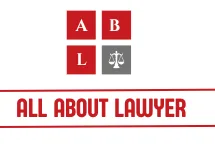What Do Debt Buyers and Collection Agencies Really Pay for Your Debt?
Debt buyers typically pay 1–10 cents per dollar of face value, with the average transaction ranging between 4–5 cents. For instance, a $1,000 credit card debt may sell for just $40–$50. Older debts (2+ years) can be sold for less than 1 cent per dollar—sometimes as little as $10 per account.
Collection agencies, by contrast, do not usually purchase debt outright. Instead, they collect on a contingency basis, keeping 20–50% of the amounts they recover for creditors.
Debt buyers and collection agencies thrive on acquiring consumer debt for pennies on the dollar—and consumers often don’t realize how little their original debt is actually worth once sold. Understanding how this secondary debt market operates can arm consumers with critical negotiation power, legal insight, and protection from exploitative practices.
Table of Contents
Industry Pricing: How Much Debt Really Sells For
| Debt Type | Typical Purchase Price | Profit Threshold |
| Credit Card Debt | 4–7¢ per $1 | 30% collected |
| Medical Debt | 1–5¢ per $1 | 20% collected |
| Mortgage Deficiencies | 2–5¢ per $1 | 25% collected |
| Utility/Telecom Debt | 3–8¢ per $1 | 25% collected |
| Zombie/Old Debt (2–10 yrs) | <1¢ per $1 | 10–20% collected |
Example: A $3 million credit card portfolio might be sold for $120,000—just 4% of its original value. Yet, if a debt buyer recovers $600,000, they realize a 400% return on investment (ROI).
What Determines Debt Prices?
Debt buyers use various metrics to assess portfolio value, including:
1. Age of the Debt
- Fresh (≤180 days): 7–15¢ per $1—higher collectability.
- Mid-aged (6–24 months): 4–7¢ per $1—standard practice.
- Aged Debts (2–10 years): Often <1¢ per $1, especially if time-barred.
2. Documentation Quality
- Portfolios with complete paperwork (contracts, payment history) sell for 20–30% more.
- Incomplete records significantly reduce legal enforcibility, lowering prices.
3. Geographic Collection Risk
States with debtor-friendly laws (e.g., California, Texas, North Carolina) reduce valuation by 15–40%:
- Limited wage garnishment rights.
- Shorter statute of limitations (e.g., 4 years in California).
4. Economic Conditions
In recessions, debt supply spikes, but recovery rates drop. Prices may fall to 2–3¢ per dollar or less.
5. Consumer Demographics & Credit Profile
Younger, employed consumers in stable regions typically yield higher ROI, raising portfolio purchase prices.
Related article: Can You Go to Jail for Not Paying a Judgment?

Debt Buyers vs. Collection Agencies: What’s the Difference?
| Type | Buys Debt? | Risk Model | Revenue Model |
| Debt Buyers | ✅ Yes | Pays upfront to own debt | Profits from full collection |
| Collection Agencies | ❌ No | Works on commission for creditors | Earns 20–50% of recovered funds |
Key Insight: Debt buyers own the debt and can sue. Agencies work for the creditor and only profit if they collect.
Zombie Debt: The Industry’s Dark Secret
Zombie debts are typically:
- 6+ years old,
- Past the statute of limitations, and
- Sold for as low as 0.5¢ per dollar.
Collectors may still pursue these debts—often illegally. Under the Fair Debt Collection Practices Act (FDCPA), consumers are protected from deceptive practices. Always demand validation before responding.
Real-World ROI Scenarios
Example 1: Recent Credit Card Portfolio
- Purchase: $1,000,000 at 4¢/$1 = $40,000
- Collected: $200,000
- ROI: 500%, excluding legal/operational costs
Example 2: Zombie Debt Tactic
- Purchase: $1,000,000 in 10-year-old debt for 0.5¢ = $5,000
- Collected: $50,000
- ROI: 1,000%—minimal risk, high reward
What This Means for You: Consumer Strategy
Negotiation Leverage
Knowing a buyer may have paid just 4–5% for your debt:
- Start offers at 20–30%—still profitable for them.
- Use “pay-for-delete” strategies for cleaner credit reports.
- For zombie debts, offer as low as 1–5%—or nothing if unvalidated.
Important Precautions
- Never acknowledge or pay old debts without written validation—it can reset the legal clock.
- Demand proof of:
- Original creditor
- Chain-of-title (ownership history)
- Statute compliance
- Original creditor
- Watch out for tax traps: Forgiven debts ≥$600 may be taxed as income.
Dispute and Protect Your Credit
- Both paid and unpaid collections damage your score—but “Paid in Full” helps more.
- Dispute inaccuracies: 79% of reports contain errors. Under the FCRA, you have 30 days to demand corrections.
Debt Buying Market Overview (2025)
- U.S. market size: $90–100 billion
- Top buyers: Encore Capital, PRA Group—acquire $10B+ annually
- Emerging trends:
- AI-enhanced portfolio pricing
- Stricter CFPB/FTC oversight
- Increased consumer protections under FDCPA
- AI-enhanced portfolio pricing
Key Takeaways for Consumers
| Insight | Action to Take |
| Buyers pay 1–10¢ per dollar | Offer 20–30% in negotiations |
| Zombie debt sells for <1¢ | Validate debt—offer little or ignore if time-barred |
| Debt collectors may act illegally | Insist on FDCPA-compliant proof |
| Market is tightening | Stay informed—use law to your advantage |
“Debt buyers gamble on consumers not fighting back. Your pen is your sword—use it.” — FTC Consumer Alert
Final Word
Debt buyers profit by exploiting gaps in consumer knowledge. But when you’re equipped with pricing insight, legal leverage, and a sound negotiation strategy, you flip the power dynamic. Whether you’re facing aggressive collectors or planning a strategic settlement, understanding the economics behind your debt is your strongest asset.
About the Author

Sarah Klein, JD, is a former consumer rights attorney who spent years helping clients with issues like unfair billing, product disputes, and debt collection practices. At All About Lawyer, she simplifies consumer protection laws so readers can defend their rights and resolve problems with confidence.
Read more about Sarah
